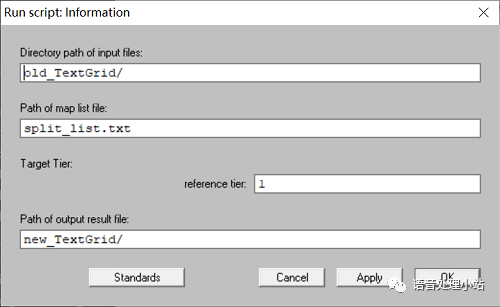

That means, I have to import sound files 827 times, and run the script 827 times. wav) specified in order in the first two columns, with the name given to the concatenated sound file in the third column. Each sound pair should have the two sound file names (minus.

TB-Basic Vowel Analysis (V2.2) This is a basic script for vowel formant analysis. This script concatenates pairs of sound files with a pause between according to rows of file names in a tab-separated text file. But now I am working on hundreds of files (827 to be precise). I have written a number of scripts for Praat Version 5.3.62 and higher for the analysis of vowels, plosives, fricatives and affricates, which I am happy to share with other researchers. It was fine when there are only a couple of sound files. To run a Praat script, go to the Control menu in the Praat objects window. Only after that, you can start cutting a second sound file. Scripts save Praat users time and effort by automating a sequence of operations. The window that opens is the scripting window. You may use this domain in literature without prior coordination or asking for. With the Object window focused, in the Praat top bar dropdown menu click New Praat Script. For example, if you want to cut a long sound file into several pieces, you have to import the sound file and the corresponding textgrid file to praat, and then run the script. This domain is for use in illustrative examples in documents. I have to import sound files one by one, and then run the scripts. Automatically coding for fluency Hand coding for fluency Scripting to extract measures. However, one problem I’m constantly facing is that Mietta’s scripts usually work with 1 sound file at a time. Mietta’s Praat scripts ( ), for example, are particularly useful for doing various things with praat. Draw formant chart from segments in the sound files of a specified directory. There are many great praat scripts out there ( here’s my collection).


 0 kommentar(er)
0 kommentar(er)
